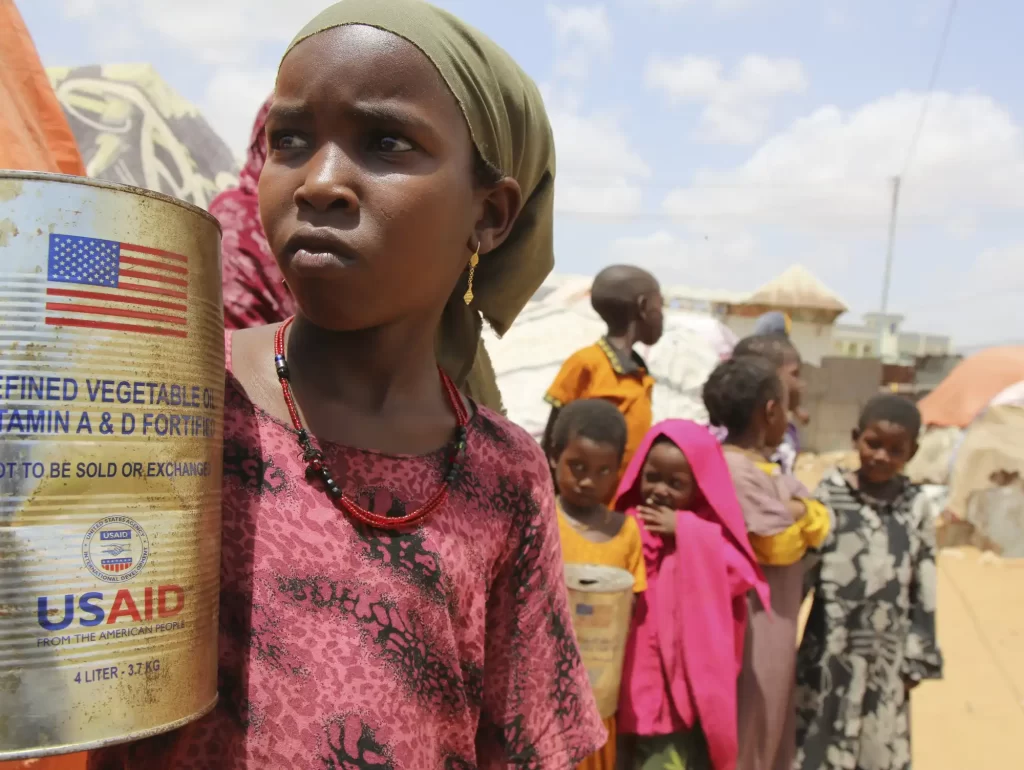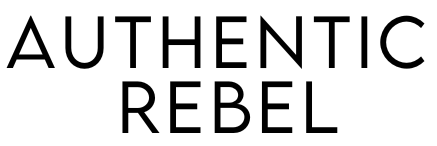Your Guide to USAID’s Collapse: Unpacking the Loss of Its Most Crucial and Explosive Programs

The United States Agency for International Development (USAID) has long been a linchpin of American humanitarian and developmental outreach, channeling billions of dollars into programs that combat poverty, disease, and instability across more than 100 countries.
As of March 29, 2025, however, a seismic shift has occurred under the Trump administration, with reports indicating that over 80% of USAID’s programs—potentially numbering over 5,200—have been terminated. This drastic reduction, driven by a directive to align foreign assistance with “core national interests,” has sparked intense debate about its consequences.
While the full scope of cuts remains fluid amid legal challenges and incomplete public data, we can explore the most important and “dangerous” programs likely eliminated, their historical significance, and the profound risks their absence poses to global stability and U.S. interests. This 2,000-word analysis delves into the stakes, drawing from available evidence and hypothetical scenarios rooted in USAID’s well-documented legacy.
The Bedrock of USAID’s Mission: Key Programs at Risk
USAID’s portfolio has historically been a tapestry of initiatives addressing immediate crises and long-term development. Among the most vital—and now potentially lost—are programs in global health, food security, disaster response, and democracy promotion. These efforts have not only saved lives but also bolstered U.S. soft power, countering adversaries like China and Russia. Let’s examine the standout examples likely targeted in this purge.
- Global Health Programs: PEPFAR and Beyond
The President’s Emergency Plan for AIDS Relief (PEPFAR), launched in 2003 under President George W. Bush, stands as USAID’s crown jewel in global health. Administered largely through USAID, PEPFAR has provided antiretroviral therapy to over 20 million people, primarily in sub-Saharan Africa, slashing HIV/AIDS mortality rates and stabilizing communities ravaged by the epidemic. In 2023, it disbursed $6.9 billion, with USAID as a key implementer, supporting clinics, drug distribution, and prevention campaigns.
Alongside PEPFAR, USAID’s malaria programs—part of the President’s Malaria Initiative (PMI)—have distributed millions of insecticide-treated bed nets and antimalarial drugs, cutting malaria deaths by nearly 50% in targeted regions since 2005. Other efforts, like childhood vaccination drives through partnerships with GAVI and disease surveillance systems, have curbed polio, tuberculosis, and emerging threats like Ebola.These programs are “important” for their sheer scale of human impact—millions owe their lives to them—and their role in preventing pandemics that could reach U.S. soil.
Their elimination is “dangerous” because it risks undoing decades of progress. Without PEPFAR, HIV could rebound, with drug-resistant strains emerging in regions with fragile health systems. Malaria’s resurgence could claim over 400,000 lives annually, as it did pre-PMI, while unvaccinated children might spark outbreaks of preventable diseases. Posts on X and media reports suggest cuts to these health initiatives, with one humanitarian official calling it a “global health massacre.” The loss of surveillance capacity—crucial for spotting the next COVID-19—further amplifies the peril, leaving the world blind to brewing threats. - Food Security and Famine Early Warning: Feed the Future and FEWS NET
USAID’s food security efforts, notably Feed the Future and the Famine Early Warning Systems Network (FEWS NET), have been lifelines for millions facing hunger. Feed the Future, launched in 2010, has bolstered agricultural productivity in 19 focus countries, lifting over 23 million people out of poverty by 2020 through training farmers and improving supply chains.
In 2023, USAID provided $1.2 billion in food assistance, feeding millions in crisis zones like Yemen and South Sudan. FEWS NET, established in 1985, uses satellite data and on-the-ground analysis to predict famines, enabling preemptive aid delivery. Its alerts have saved countless lives, as seen during the 2011 Somalia famine, where early warnings mitigated worse outcomes.
These programs are “important” because they address root causes of instability—hunger fuels conflict and migration—and support U.S. economic interests by creating markets for American agricultural exports. Their loss is “dangerous” due to the immediate human toll: in Sudan, over 1,000 USAID-supported kitchens have reportedly closed, putting 600,000 at risk of starvation. Without FEWS NET, governments and NGOs lose the ability to anticipate crises, as one X post lamented its shutdown alongside other “crucial databases.” The ripple effects could destabilize entire regions, driving mass displacement and extremism—problems that inevitably rebound to the U.S. - Disaster Response: The Office of U.S. Foreign Disaster Assistance (OFDA)
USAID’s OFDA has been America’s rapid-response arm for natural disasters and conflicts, delivering aid to millions in places like Haiti after the 2010 earthquake and Syria during its civil war. In 2023, USAID’s humanitarian aid totaled $44 billion, with OFDA coordinating food, shelter, and medical supplies.
Its urban search-and-rescue teams, often drawn from U.S. cities like Los Angeles, have pulled survivors from rubble worldwide, while partnerships with NGOs have provided clean water and sanitation in refugee camps.OFDA’s “importance” lies in its ability to project U.S. leadership and goodwill, often arriving before other nations’ aid in high-profile crises.
Its elimination is “dangerous” because it cedes this role to rivals like China, whose teams could fill the void, as a former USAID official warned regarding recent Myanmar earthquake response. Without OFDA, disaster-affected regions face prolonged suffering, and the U.S. loses a tool to build diplomatic bridges—especially in nations with strained relations, like Iran, where USAID has historically operated independently of State Department politics. - Democracy and Governance: Stabilizing Fragile States
USAID’s democracy programs have trained election monitors, supported independent media, and strengthened judicial systems in countries transitioning from authoritarianism. In Ukraine, USAID invested $14.4 billion since 2022—the highest globally in 2023—bolstering governance amid Russia’s invasion.
Similar efforts in Afghanistan and sub-Saharan Africa have aimed to counter extremism and corruption, fostering stability that aligns with U.S. security goals.These initiatives are “important” for their long-term impact: stable democracies are less likely to harbor terrorists or trigger refugee crises.
Their loss is “dangerous” because it emboldens autocrats—Russia and China could gain sway in places like Ukraine or Africa, where USAID’s absence leaves a vacuum. Critics, including Mexico’s president, have called these programs meddlesome, but their elimination risks a world where illiberal regimes flourish unchecked, threatening U.S. influence.
The Purge: Context and Execution
The Trump administration’s assault on USAID began swiftly after January 20, 2025, with an executive order freezing foreign aid for a 90-day review. Under Secretary of State Marco Rubio and Elon Musk’s Department of Government Efficiency (DOGE), over 5,200 of USAID’s 6,200 programs were reportedly axed by mid-March, slashing its $40 billion annual budget. This aligns with Trump’s “America First” ethos, echoed in his Truth Social posts decrying USAID’s spending as “totally unexplainable.” Rubio’s X announcement on March 10 framed the cuts as eliminating “tens of billions” misaligned with U.S. interests, with survivors folded into the State Department.
The process has been chaotic: thousands of staff were furloughed or fired, overseas workers recalled, and contractors terminated en masse. Lawsuits from nonprofits allege illegal overreach, citing the Impoundment Control Act, but the Supreme Court has temporarily stalled injunctions. X posts and NPR reports highlight halted vaccine deliveries, shuttered clinics, and lost famine data, painting a picture of abrupt, sweeping disruption.
Why These Cuts Are “Dangerous”: A Cascade of Consequences
The elimination of these programs isn’t just a budget trim—it’s a demolition of systems built over decades. Here’s a deeper look at the fallout:
- Health Catastrophe
Without PEPFAR, 20 million HIV patients risk losing treatment, potentially sparking a global resurgence. Malaria’s rollback could kill millions, while unvaccinated populations—especially children—face resurgent polio and measles. Disease surveillance, once a USAID strength, is now crippled, as Dr. Atul Gawande warned on X about cuts to “global childhood vaccines” and “surveillance for deadly diseases.” This isn’t just a Third World problem—pandemics don’t respect borders. - Famine and Instability
The loss of Feed the Future and FEWS NET threatens millions with hunger. In Sudan, 600,000 face starvation without USAID kitchens, per X posts. Without early warnings, famines could blindside the world, as seen pre-FEWS NET in Ethiopia’s 1980s crisis. Hungry populations revolt—Somalia’s 1990s collapse birthed al-Shabaab—and the U.S. could face more military burdens or refugee waves. - Geopolitical Retreat
Disaster response and democracy programs amplify U.S. influence. Without them, China’s Belt and Road could dominate aid narratives, as seen in post-cyclone Mozambique. In Ukraine, reduced support might tip the scales toward Russia. America’s retreat hands rivals a propaganda win, weakening alliances and emboldening foes. - Economic Blowback
USAID contracts supported 14,000 U.S. jobs and firms exporting food and medicine. Their loss, alongside disrupted markets in aided nations, could cost billions, contradicting Trump’s economic promises. NGOs, a backbone of aid delivery, face collapse, further eroding capacity.
The Counterargument: Reform vs. Ruin
Defenders of the cuts, including Rubio and Musk, argue USAID was bloated and misaligned—funding “radical” agendas like gender equity or climate initiatives over “core” U.S. interests. Musk’s X reply to Rubio called it “tough, but necessary,” suggesting integration into the State Department streamlines aid. Critics within USAID, like author Jonathan Johnston, have long noted inefficiencies, such as Haiti’s rice dependency on U.S. imports. Reform, they say, could sharpen focus and cut waste.
Yet the scale and speed of this purge—over 80% of programs gone in weeks—suggests less a scalpel than a sledgehammer. Waivers for “life-saving” aid exist, but reports indicate even HIV and famine relief face termination notices, per NPR. The lack of transparency—Rubio’s vague criteria—and legal battles hint at ideology trumping pragmatism.
What’s Next?
As USAID’s remnants shift to the State Department, the world braces for impact. Short-term, millions face hunger, disease, and chaos. Long-term, the U.S. risks ceding global leadership to rivals, undermining decades of investment in stability. Congress could intervene—Democrats call it unconstitutional—but political will remains uncertain. For now, the loss of USAID’s most critical programs leaves a void as dangerous as it is profound, a gamble with lives and power on a scale few can fully predict.
Recommend0 recommendationsPublished in Being Human, News





This is heartbreaking, Otto. It’s like watching a lifeline unravel—thread by thread—while knowing how many hands once held onto it for hope. Thank you for laying it out so clearly. We can’t let silence stitch the rest of this story. We have to keep speaking, organizing, and caring—deeply, urgently.